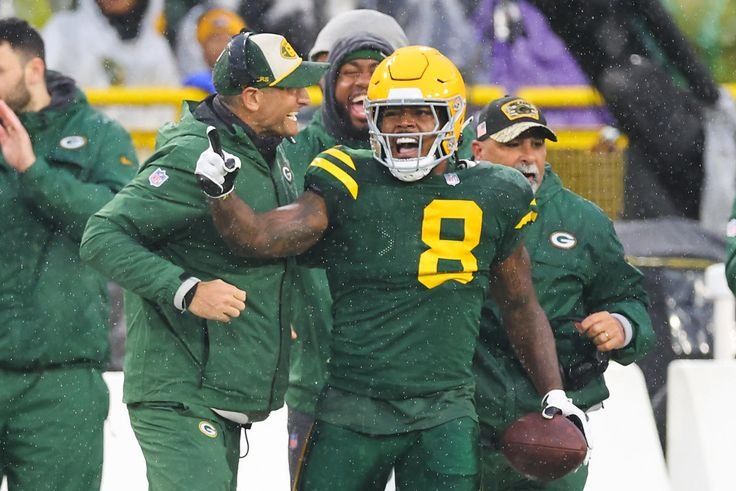Introduction
Fantasy football is more than just a game; it’s a battleground of strategy, research, and smart management. One of the most pivotal moments in every fantasy football season is deciding when—and how—to trade players. A single trade can make or break your team’s success, and this is where trade analyzers come into play. These powerful tools take the guesswork out of swaps, providing insights that help enthusiasts make informed decisions.
But what exactly is a trade analyzer, and how can you master it to stay ahead of the competition? Read on for a deep dive into trade analyzers, how to use them, real-life success stories, and tips to ensure every trade leads you closer to your championship goal.
What Is a Trade Analyzer, and Why Do You Need One?
A trade analyzer is an online tool specifically designed to evaluate potential trades in fantasy football. Instead of relying purely on instinct or biased opinions, these tools analyze key factors like player performance, injuries, and team schedules to help you decide if a particular trade is worth making.
Why they’re invaluable:
- Objective Assessment: Avoid the emotional traps that often lead to poor decisions.
- Data-Driven Insights: Leverage stats, projections, and comparisons to understand player value.
- Balanced Trades: Ensure a trade benefits you both in the short and long term.
Whether you’re a veteran of the fantasy league or a rookie aiming for the top, a trade analyzer is your secret weapon.

How to Use a Trade Analyzer: Step-by-Step Guide
Intimidated by analytics-heavy tools? Don’t be—trade analyzers are straightforward and accessible. The following guide will walk you through the process so you can get started with confidence.
Step 1: Access a Trade Analyzer Tool
Popular options include tools from FantasyPros, ESPN, or Yahoo Fantasy Sports. Locate one that supports your platform or league settings.
Step 2: Input Player Details
Enter the players you’re offering for trade and the players you’re receiving. Ensure the player IDs match your league database for accurate analysis.
Step 3: Review Scoring Systems
Customize the trade to fit your league’s scoring preferences, such as PPR (points per reception), standard formats, or IDP (individual defensive players).
Step 4: Analyze Results
Your analyzer will generate a score, value comparison, or “win-loss” determination based on player projections. It may consider factors such as matchups, injuries, and bye weeks.
Step 5: Seek Second Opinions
Before finalizing any deal, double-check results with another platform for consistent evaluations.
Advanced Strategies to Master Your Trade Analyzer
Once you’ve grasped the basics, advance your tactics to maximize a trade analyzer’s capabilities.
1. Track Player Trends
Use analyzers weekly to detect patterns. Is a lesser-known player outperforming their historical stats? Trends like these can identify sleeper picks with massive upside.
2. Leverage Opponent Knowledge
Does your league rival desperately need a running back? Identify gaps in their roster and propose trades that benefit both sides—but ultimately strengthen your lineup more.
3. Focus Beyond Numbers
While projections are essential, consider intangibles like a player’s consistency and role on their real-life team. An analyzer might undervalue breakout candidates waiting for their opportunity to shine.
Real-Life Examples of Successful Trades Using Trade Analyzers
Still skeptical about using technology to dominate your fantasy league? These real-life case studies prove the impact of trade analyzers.
Case 1: Turning Depth Into Gold
Alex used a trade analyzer to evaluate trading his bench quarterback for a mid-tier wide receiver. The analyzer highlighted the wide receiver’s higher playoff potential, which led to Alex clinching his league championship.
Case 2: Capitalizing on Injuries
Stephanie noticed a season-ending injury to a starting RB created an opportunity for a backup player to carry more load. Her trade analyzer confirmed the rising value. She pulled the trigger, and the backup delivered consistent points every week.
The Future of Trade Analyzers in Fantasy Football
Trade analyzers are constantly evolving, with AI and machine learning shaping their future. Here are some innovations to watch for:
- Predictive Analytics: Next-gen tools may predict breakout rookies before they hit their stride.
- Live-Game Updates: Soon, analyzers could consider in-game stats to assess trade value in real-time.
- Integration with Wearables: Imagine an analyzer that factors in a player’s health through wearable data, like biometrics and workload stats.
Fantasy football is about to get even smarter with tools that turn fans into gridiron strategists.
Tips for Choosing the Right Trade Analyzer Tool
Not all trade analyzers are created equal. Here’s how to find one that fits your league and style.
- Compatibility: Ensure the tool supports your league’s format and scoring system.
- User-Friendly Interface: Look for tools that are easy to use and understand.
- Depth of Analysis: Some analyzers provide basic evaluations, while others offer more advanced insights like playoff schedules or weather impact.
- Cost: While free options exist, premium features might be worth investing in for serious players.
- Community Reviews: Check forums and league discussions to see which tools deliver reliable results.
Make Every Trade Count With Data-Driven Decisions
Fantasy football is more than just a fun competition; it’s a test of strategy, foresight, and decision-making. Using trade analyzers gives you an edge by turning guesswork into certainty and ensuring your moves are backed by reliable data.
Remember, in a game where every point matters, informed trades could be the difference between celebrating victory or settling for mediocrity. Take control of your fantasy season—give a trade analyzer a try!

